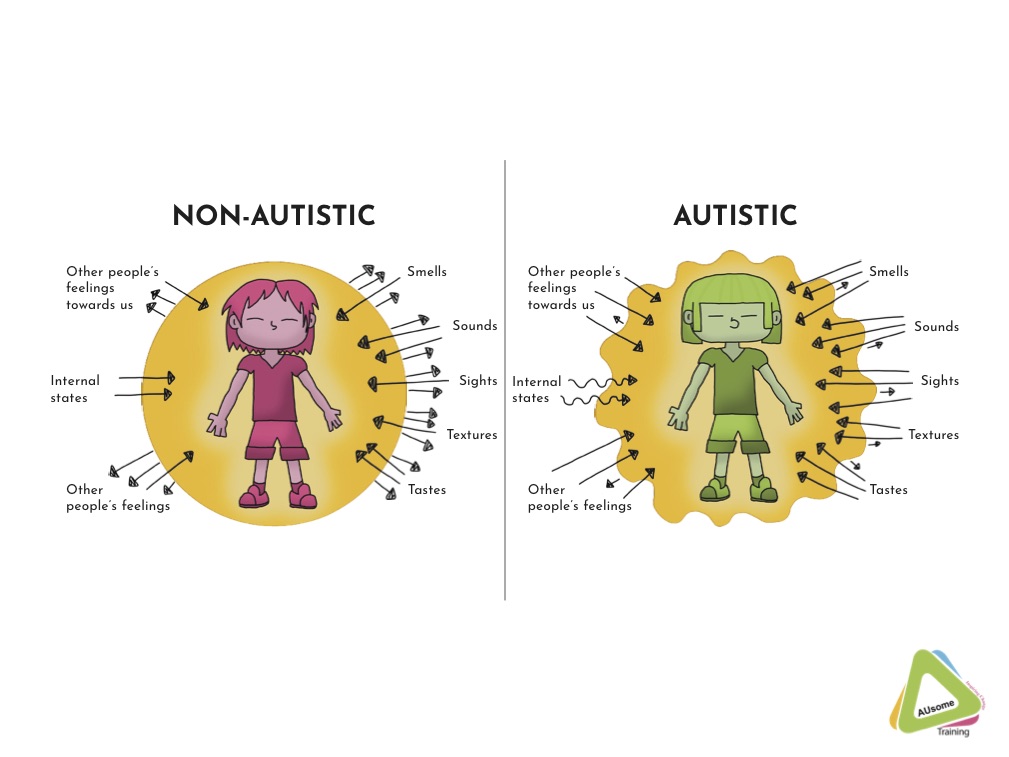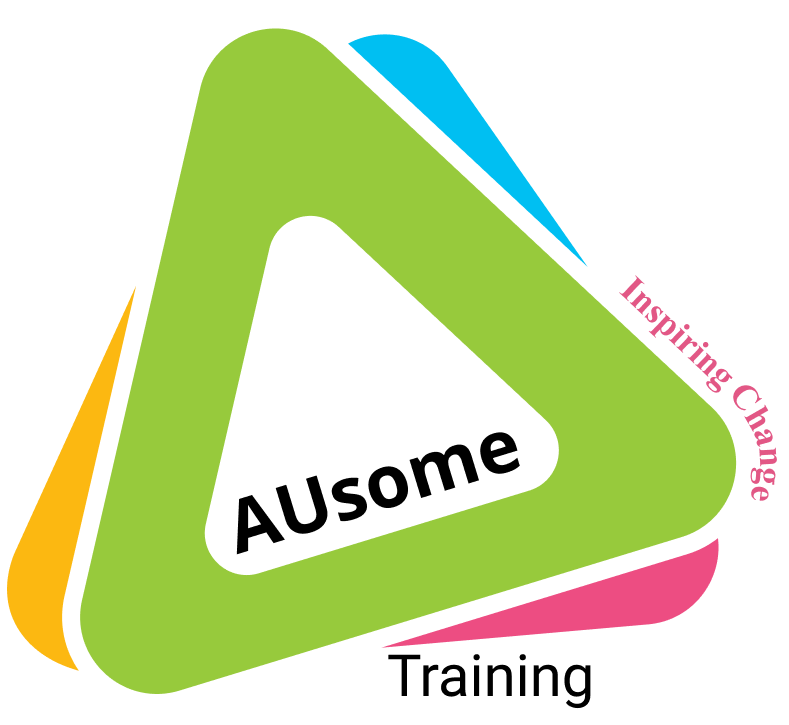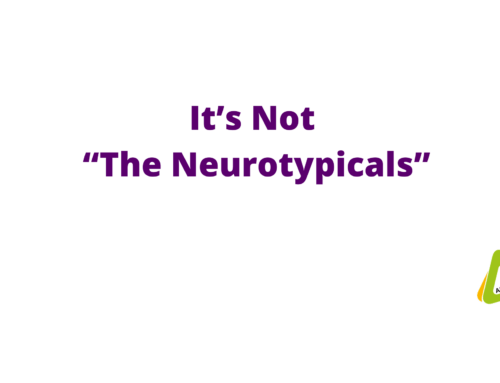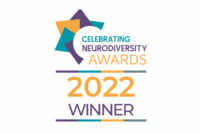First we need to look at how “autism” was created. We could look at the early work around autism and say that they discovered a condition and named it autism. Or we could say that they made up a condition to explain human differences that they noted but did not fully understand.
I will go with the latter. Autism is a concept or condition used to describe a minority of human beings who interact with our environment in a way which differs slightly from those who are not as sensitive as us. But is it really a condition to interact with the world differently?
Autism is defined by a list of deficits so let’s look at these first.
DSM-5 defines autism as :
- Persistent deficits in social communication and social interaction across multiple contexts, as manifested by the following, currently or by history:
1 Deficits in social-emotional reciprocity, ranging, for example, from abnormal social approach and failure of normal back-and-forth conversation; to reduced sharing of interests, emotions, or affect; to failure to initiate or respond to social interactions.
2 Deficits in nonverbal communicative behaviours used for social interaction, ranging, for example, from poorly integrated verbal and nonverbal communication; to abnormalities in eye contact and body language or deficits in understanding and use of gestures; to a total lack of facial expressions and nonverbal communication.
3 Deficits in developing, maintaining, and understanding relationships, ranging, for example, from difficulties adjusting behaviour to suit various social contexts; to difficulties in sharing imaginative play or in making friends; to absence of interest in peers.
Let’s look at this part first.
It’s important to note the use of the word “normal” here. There is an assumption that non-autistic social communication is normal and anything that deviates from that is not. Therefore Autistic Communication and Culture is interpreted and defined as abnormal.
This first part illustrates the inability of non-autistic professionals to empathise with or understand communication which is different to their own. Are they therefore saying that someone who is from a different culture and speaks a different language has a condition which inhibits them from communicating “normally”.
Well, that idea has been around for quite a while and it’s a bit alarming that we are still seeing it today and that it is promoted by medical professionals. You would think that by now we would have an appreciation for different cultures and that we are not just labelling entire cultures as abnormal. To me this is no different to the Christian “explorers” referring to any natives they encountered as “savages” because they had a culture different to theirs. There is a certain arrogance when we consider our own culture better than others , especially when we seem to have an inability to reflect on the shortcomings in our own society.
If non-autistic social communication and culture is positioned as the ultimate way to exist then why are we living in such a hostile world? How about we analyse non-autistic “social skills” for a bit. Which I will do, but not in this article.
To understand these difficulties with Empathy it is worth exploring Damian Milton’s theory on Double Empathy .
Th DSM-5 then goes on to describe autism as:
B. Restricted, repetitive patterns of behaviour, interests, or activities, as manifested by at least two of the following, currently or by history (examples are illustrative, not exhaustive; see text):
1 Stereotyped or repetitive motor movements, use of objects, or speech (e.g., simple motor stereotypies, lining up toys or flipping objects, echolalia, idiosyncratic phrases).
2 Insistence on sameness, inflexible adherence to routines, or ritualized patterns or verbal nonverbal behaviour (e.g., extreme distress at small changes, difficulties with transitions, rigid thinking patterns, greeting rituals, need to take same route or eat food every day).
3 Highly restricted, fixated interests that are abnormal in intensity or focus (e.g, strong attachment to or preoccupation with unusual objects, excessively circumscribed or perseverative interest).
4 Hyper- or hyporeactivity to sensory input or unusual interests in sensory aspects of the environment (e.g., apparent indifference to pain/temperature, adverse response to specific sounds or textures, excessive smelling or touching of objects, visual fascination with lights or movement).
This is where the criteria really starts to baffle me. “Stererptyped or repetitive movements” in autism is also referred to as Stimming. It is seen as something inappropriate that Autistic people do, a deficit of autism. The baffling part is that the professionals writing this criteria don’t seem to realise that stimming is a human behaviour and that all humans stim. They also don’t seem to understand the functions or purposes of human stimming. This is concerning for a number of reasons but particularly because they are writing criteria for human behaviour without illustrating an understanding of human behaviour.
They then go on to list “insistence of sameness” as a core characteristic of autism. But isn’t that exactly what they’re doing here themselves? Aren’t they insisting that everyone should communicate in the same way, that everyone should move in the same way and that everyone should have the same level of interest or focus? This is where the Double Empathy theory comes in again and also the inability some people have to analyse their own behaviour. The criteria states that Autistics have “inflexible adherence to routine” but isn’t this just another example of human behaviour? Don’t most of us follow a routine? Do we get up around the same time each morning, go to bed at night, work in the same career for most of our lives, make a shopping list? Don’t medical professionals advise new parents to “get their babies into a routine”? And a few years later aren’t those parents frazzled by the end of the school holidays and telling everyone they meet that they can’t wait for the kids to go back to school so that they can have….routine!
Human beings like routine and because Autistics are human then naturally we like routine also. But what happens when human beings become highly anxious? What happens when humans are highly stressed or have experienced trauma? Well, then routine becomes more important because we are just about coping with all those negative experiences inside our body and mind that we know anything else will just throw us over the edge. So a completely human response to stress is to control our environment and our routine so that we can limit any unexpected causes of stress.
Anxious humans are less flexible in their routines. The “experts” who wrote the DSM missed a very obvious and very human sign of anxiety and stress. They missed it. They were too busy defining our perceived deficits to notice that Autistics are suffering and they listed a human reaction to stress as a “symptom” of autism.
They then talk about rigid thinking in autism but isn’t the idea that there is only one “normal” way to communicate and behave quite rigid?
And there’s the pathologising of the ability of Autistic kids and adults to teach ourselves and to become experts in our interests. Are these “experts” pathologizing learning, focus and expertise itself? They mention “strong attachments to unusual objects” but aren’t all humans strongly attached to objects? Aren’t we living in a world where we are all attached to objects. It would appear that materialism is now a characteristic of autism.
Then we get to the bit about “hyporeactivity to sensory input or unusual interests in sensory aspects of the environment”. Here again we see quite normal human learning pathologised. We also see a lack of understanding of how our senses relate to that learning and how stimming plays a central role to all of this in human beings. I think they’ve also missed some important human reactions here. If a human is oppressed, mistreated, socially rejected and abused like Autistics are then that human becomes accustomed to feeling uncomfortable. If a human is living in an environment that assaults their senses everyday then they get used to pain. Pain becomes “normal”. When pain or discomfort is your normal then it can appear as “indifference to pain”.
There is also more involved in this. The DSM-5 fails to incorporate medical conditions experienced by Autistic people. It seems to just call everything an Autistic person experiences “autism”. Ehlers Danlos Syndromes can affect interoception and someone’s ability to recognise sensations in their body, including pain. The instance of EDS in Autistics is much higher than in the non-autistic population.
Many people with EDS also experience ongoing pain, that becomes their “normal”. Pathologising response to pain does not help people. Looking beyond labelling these responses as inappropriate, and investigating the reasons why they happen benefits us more.
If we look beyond an inappropriate response in both these examples then we see that someone is suffering. We see that Autistics are subjected to painful experiences in our world, or we discover that someone has a medical condition. This is where the medical model of autism really lets us down. It’s also where it falls down because it seems to ignore its own research in other areas. There are many more examples where conditions experienced by Autistic people are ignored by DSM. I just used EDS as an example here but we could also include motor disorders, epilepsy, perceived intellectual disability just to mention a few.
Instead of recognising separate conditions the medical model started with an idea of autism and then ignored separate conditions and just started grading “autism” into levels of severity. This has caused many Autistic people to be misdiagnosed and mistreated. There is an increasing incidence of Autistic adults telling us that they were diagnosed with “severe autism” or as intellectually disabled as children when really they had a motor disorder. They tell us once they were given access to AAC (Augmentative and Alternative Communication) they were able to communicate in a way others understood.
Let’s pause here for a moment to contemplate the implications of this injustice for Autistic people who have been incorrectly labelled as intellectually disabled. People who are adults but often described as having a “mental age” of a child. Our neurokin who have been locked away in institutions because their bodies don’t co-operate with their minds. Let’s pause and think about how we have mistreated other humans and let’s think about how we are still doing this. It might also be a good point to consider how we measure intellect and how differences in communication whether it’s verbal or through motor movements is often ignored. It’s also a good place to consider if Intellectual Disability exists at all or if it yet another example of the medical model just getting it very wrong. How can we measure someone’s internal world if we only have the tools to measure it externally or if we only design tools to measure our external evaluation of it?
The DSM created the idea of severe autism but when we take this idea apart then we see an Autistic person with separate conditions. The medical model ignored medical evidence. I say separate conditions here because if I use “co-occuring” or “co-morbid” then I am implying that autism is a condition and that is what I’m here to argue against.
If autism is just a concept made up to describe human behaviour as inappropriate in certain contexts then who are Autistic people? The DSM did get something right though and that is that Autistic people are highly sensitive to our environment. We are more sensitive when you compare us to less sensitive people but that is not to say that this sensitivity is wrong, inappropriate or something to be medicalised.

Autistics are human beings who have a different sensory system to non-autistic human beings. We interact with our environment differently to non-autistic people. We have our own language and culture which we are only beginning to explore as a community. We communicate in our own language with other Autistics but our language is often misinterpreted by non-autistics. Autistics have an ability to hyper focus and to become experts on a subject because learning for us is an emotional experience.
The medical model served one purpose in that it gave us a way of identifying ourselves and our community. Autistics have now moved far beyond this oppressive model and many professionals are following us.
By listening to Autistic voices, by listening to marginalised voices in our own community and by sharing our collective knowledge and experiences we can and will create a better world. A better world not just for Autistics but for all marginalised communities because that is what Autistics do. That is the essence of being Autistic, we leave no one behind. We do not serve ourselves without serving others. We are connected to the world and everyone in it. We see everyone as equal to ourselves and we have not lost that human connection that binds us all together. Connection is something to be celebrated, not pathologised.



